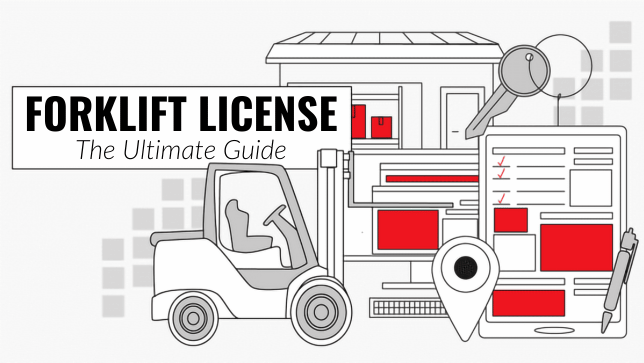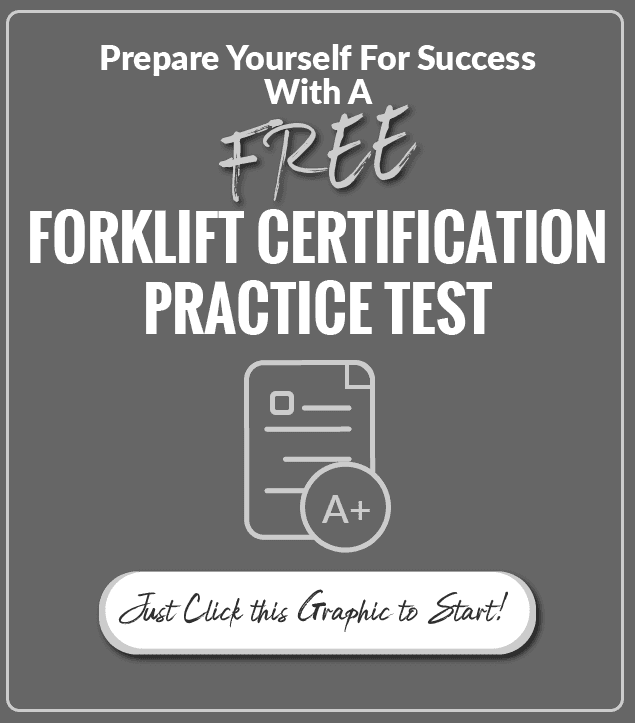Are you looking to get your forklift license? Fortunately, now is a great time.
According to the U.S. Bureau of Labor, approximately 88,900 job openings for material moving machine operators are projected annually over the next decade.
However, if you are new to forklifts, you probably have a lot of questions:
- How do I become a forklift operator?
- What do I need to study?
- How do I get certified?
Luckily, you have come to the right place. In this post, we have compiled everything you need to know to get trained, certified, and secure your first forklift driving job.
Let’s dive in!
Part I: How to Get a Forklift License
Chapter 1: The “3 Pillars” of Forklift Operator Certification
The first step in pursuing your forklift license is to know what is required.
The Occupational Safety and Health Administration (OSHA) is the authority that dictates the rules of forklift licensing. In standard 1910.178(l), you will find all of OSHA’s forklift certification requirements.
However, you did not come here to read dry government “legalese,” did you? No, you are here for a short, sweet answer. So, to put it in simple terms, to get your forklift operator license, OSHA says that you must receive:
- Formal instruction.
- Hands-on training and evaluation.
- Certification.
We call these the “3 pillars” of forklift operator certification, and we will expand on each to help you better understand what they entail.
Bonus Tip: The Fair Labor Standards Act prohibits anyone under 18 years old, from operating forklifts in non-agricultural environments.
Formal instruction
Formal instruction means classroom teaching and consists of a “lecture, discussion, interactive computer learning, video, and/or written material” [OSHA standard 1910.178(l)(2)(ii)].
However, to be considered comprehensive the instruction must also cover specific topics.
OSHA lays out all 22 topics it mandates in standards 1910.178(l)(3)(i) and 1910.178(l)(3)(ii).
Again, we know you came here for the simple facts. So, a training program should cover:
- How to operate the different types of trucks the operator will be using (instructions, safety precautions, limitations, etc)
- Forklift capacity, stability, steering, maneuvering, and visibility
- How to construct, transport, stack, and unstack loads
- Pre-shift inspections and any maintenance the operator will be required to perform.
- How forklift attachments work
- The dangers of operating in confined/hazardous spaces and the necessary precautions drivers should take when doing so
- How to refuel (internal combustion trucks) and/or charge batteries (electric trucks)
- How to safely operate a fork truck on different surface conditions, ramps, and slopes
- How to work safely around pedestrians in the workplace
In chapter 3 of this post, we will dive deeper into these topics to prepare you before you sign up for training.
Hands-on training and evaluation
This portion of the training must consist of “demonstrations performed by the trainer and practical exercises performed by the trainee” [OSHA standard 1910.178(l)(2)(ii)]. This means you will first watch a trainer properly operate a forklift, followed by their observation of your performance operating a forklift.
Certification
Lastly, your employer (or a qualified 3rd party trainer) must do two things before you can legally operate a forklift:
- Confirm that you have received the required training.
- Evaluate you as you operate a forklift in the workplace.
If they are satisfied, then congrats, you are certified!

A few more words on this last requirement…
This last pillar (Hands-on training) deserves a little more attention.
Many believe they can obtain a license independently, thus skipping this pillar.
As we have discussed, this is certainly not the case. OSHA specifies that only your employer or a qualified 3rd party trainer can make the final determination. This determination is made based on how you operate a powered industrial truck under actual conditions in the workplace – not a training facility.
So, to be clear: Only your employer or a qualified trainer can certify you to operate a forklift.
Nevertheless, you can still receive forklift operator training (not a forklift license) on your own with an employer. That includes both the classroom and hands-on portions. This can help you stand out more among other applicants when you apply for a forklift driving job so it is worth considering if you are hunting for a job.
Chapter 2: Forklift Certification Cards: Everything You Need to Know
Before we delve into training programs, I want to first discuss forklift certification cards.
What Is a Forklift Certification Card?
A forklift certification card serves as evidence of qualification to operate a forklift. They signify that the operator has completed the required training and instruction and that their employer or trainer has found them competent to operate a forklift in the workplace.
Wallet cards are the most common forklift certificate. Operators can easily keep them on their person at all times.
Here is an example of a typical card:
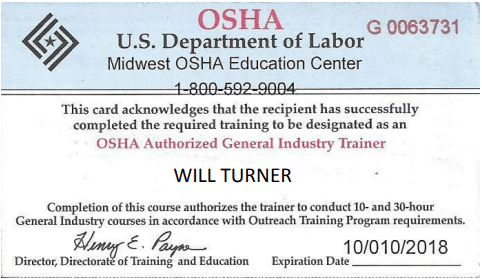
However, wallet cards are not the only acceptable format for certificates.
The Occupational Safety and Health Administration (OSHA) does not specify the format for the certification. They only require that it includes specific information.
Here is what they say:
“The certification shall include the name of the operator, the date of the training, the date of the evaluation, and the identity of the person(s) performing the training or evaluation.”
OSHA 1910.178(l)(6)
That said, a simple sheet of paper would work. As long as it contains the information above, it counts as a forklift certification “card.”
Does Your Picture Have to Be on Your Certification Card?
No, your card does not need your picture on it. It only required the basic identifying information above.
Do you need a driver’s license to operate a forklift?
Contrary to common belief, a forklift operator license is entirely separate from a driver’s license. That means that you can have one without having the other.
So, a bad driving record will not prevent you from getting your forklift license.
That is great news if you have never gotten your driver’s license or if you might have lost yours due to accidents, tickets, or other issues.
What is the penalty for driving a forklift without a license?
OSHA holds employers legally responsible for getting their forklift operators trained and certified.
In the event of an accident, OSHA will review the company’s training records to verify that its operators have received proper training. If the company cannot provide proof of training, OSHA can levy fines of up to $16,131 per violation!
Don’t believe me? Here are just a couple of examples of companies punished for providing inadequate forklift training:
- A Las Vegas-based exhibition planning company was fined $91,000 for an injury caused by a forklift operator whom the company failed to train and certify.
- A Pennsylvania box manufacturer was fined $201,212 for failing to provide forklift operator certification training, among other safety violations.
- A Louisiana abrasive supplier was fined $77,770 for violations, which included failing to provide proper forklift training and certification.
The lesson is clear: Businesses must get their operators trained and certified. And if you are an operator, do not even think about printing off any fake certification cards without going through the training!
I Lost My Forklift Certification Card. What Should I Do?
Uh oh. You lost your forklift operator certificate. Now, what do you do?
First step: Do not panic.
There are a couple of options – including some free ones – which will help you get back up and running in no time!
Where to Get Replacement Cards
The most obvious solution is to ask your boss. If your company has an internal training program, they will likely have a surplus of cards you can use as a replacement.
However, this is not always an option. Next, check with the training center that certified you. They maintain records of program completions and can issue you a replacement card.
If you cannot contact the training center, a third option is to buy a new card from an online retailer. You can google “forklift certification card” and take your pick.
Whichever option you choose, remember to ensure a trained and authorized evaluator signs it, or your certification will not be valid.
Download Our Free Printable Forklift Certification Card Templates
Sometimes, you want to avoid spending money if at all possible.
We get it!
Luckily, we created free forklift certification card templates that you can download and print as much as you like. For convenience, we have even included them in different formats.
Just click on the link of your preference. You will prompted to save to your desktop. Once you have done that, you can download and print. Enjoy!
Forklift Certification Wallet Card Templates
Download WORD Version Download Excel Version
Forklift Certificate of Completion Templates
Download WORD Version Download PDF Version
Want Something a Little More… Professional?
If you want cards for your company’s internal training program, check out our high-quality forklift certification cards.
They have several advantages over the free options above, including:
- Greater durability for longer wallet life
- Easily customizable with your company’s branding, colors, and logo
- More “official” looking instead of a piece of paper
Now that we are clear on forklift certification cards, let’s go through training options.
Chapter 3: Where to Get Forklift License Training: All Your Options Explained
To recap, we have learned, classroom instruction, hands-on training, and employer evaluation are required to get your forklift license.
However, you can fulfill the first of those two requirements on your own, but the employer evaluation can only be satisfied in person by your employer.
So your next question is, “Where can I go to get my forklift license training”?
The two basic options for forklift training classes are:
- Online
- In-person
How do you decide which one is right for you?
Let’s cover the features and benefits of each. That way, you can make an informed decision that fits your preferences and circumstance.
Online
First, let’s address the most common question: Is an online forklift certification legit?
With lots of options and aggressive marketing for online certification courses, this question has probably crossed your mind.
The simple answer is that they can only get you trained but unless they observe you operating in the workplace, they cannot certify you.
As we have learned, your employer or a hired trainer is ultimately responsible for ensuring you can safely and competently operate a forklift under actual working conditions.
The Bottom Line: Online forklift certification programs can get you trained, but they cannot certify you without an evaluation.
However, even if a workplace evaluation is not part of the deal, as long as the program adequately covers the topics required by OSHA (as we covered in the previous chapter), it can be considered “legit.”
Now that we have that answer, let’s talk about what you can expect from online courses.
An overview of online training programs
Online certification courses are similar to other online academic courses you might take.
Usually, the company offering the course will give you a login, where you can see all the different classes and resources included with your purchase.
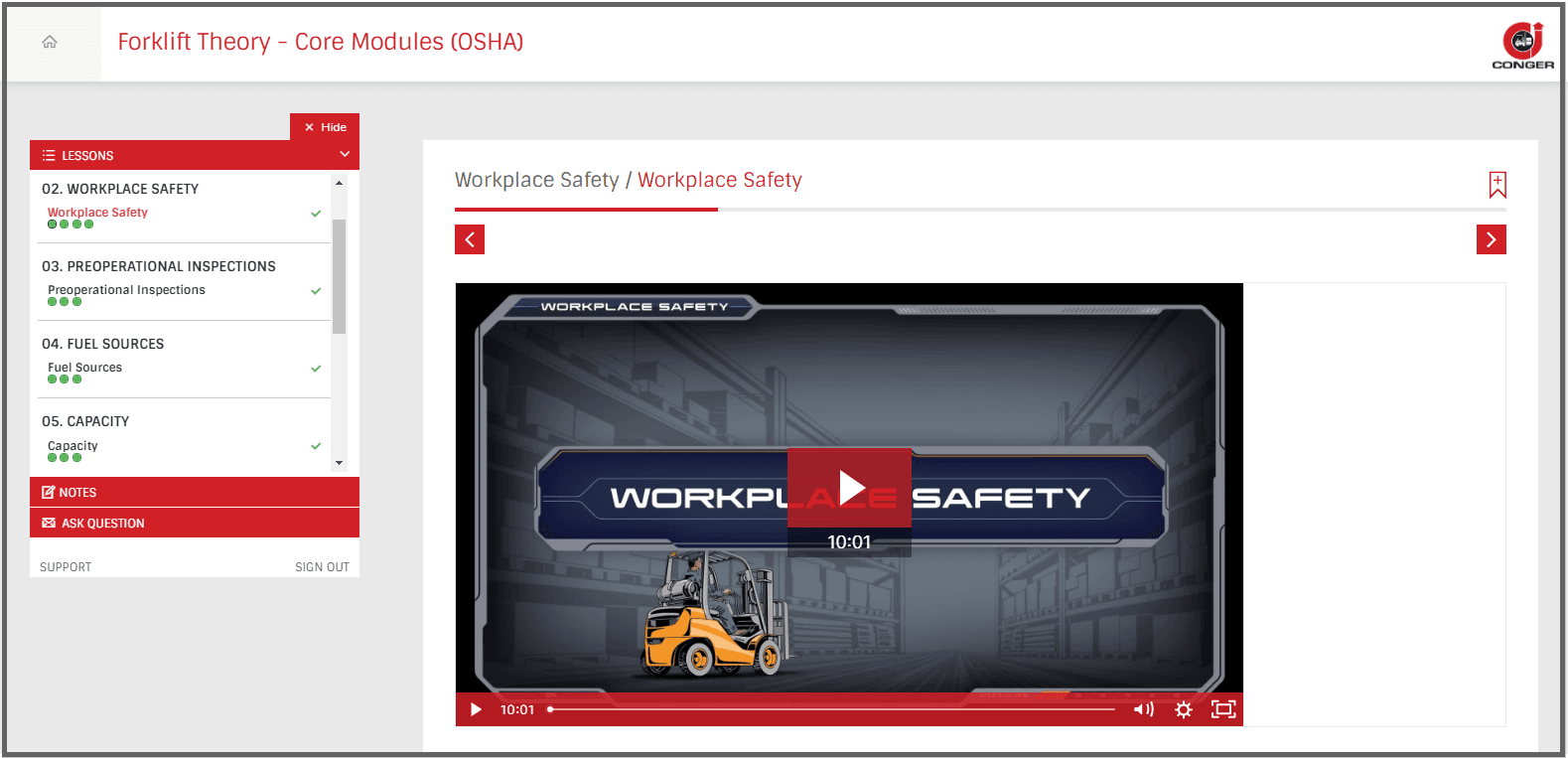
Once you begin, you will watch videos, read, and complete interactive exercises to help you learn and retain the information.
The course will most likely have end-of-section quizzes to test your knowledge.
At the end of the program, you will take a final exam.
Once you pass the final exam, you will receive a certificate confirming your completion of the formal instructional part. You can then present this certification to your employer to prove you have received operator training.
The pros and cons of online forklift training
PROS
Convenient: You can access course materials on your computer, tablet, or smartphone.
Less expensive: Buy online training for as little as $40.
Self-paced: Complete in as little as an hour – or take as long as you like.
Unlimited access: Get lifetime access to the course materials.
Instant results: Generate a “certificate of completion” after you pass the final exam.
CONS
No “hands-on” portion: Most online programs only have the classroom “theory” portion.
Limited support: If you have questions on the material. You may have to research to get the answers.
Where to find online forklift training programs
The easiest way to find these programs is simply by googling “forklift certification” or some version of that term. You can then sort through the different results, scan the pages, and see which suits your budget and situation.
Live in Wisconsin? Learn more about our “blended” forklift training…
Conger’s online training program features classroom instruction and a hands-on training component. Visit our forklift certification course page for more information. We have in-person locations in Green Bay, Neenah, Wausau and Richfield.
In-person
In-person training is another popular way to get trained as a forklift operator.
Remember high school? If so, you are already familiar with how this type of training works.
You will likely listen to a lecture, view PowerPoint or projector presentations, watch videos, and have the opportunity to ask questions. You might also participate in group activities with other students.
Watch this short video to get a sense of what classroom operator training is like:
When you complete the in-class portion, you will typically move to the hands-on evaluations (the second “pillar”). That is where trainers will evaluate your skills and knowledge of best practices as you drive and operate an actual forklift.
The pros and cons of in-person classroom training
PROS
Personal attention: Get direct access to instructors who can tailor the teaching to your learning style.
Interact with other students: Get a more well-rounded learning experience by studying alongside others.
Hands-on training: Operate an actual forklift and get a real-life feel for it.
CONS.
More expensive: It costs more to conduct a classroom training course, so you will have to pay more.
Less convenient: If you live in a smaller town, you may have a long commute to the nearest training center.
Not self-paced: Classes typically last 4-8 hours, usually across 1-2 days.
Where to find in-person forklift training programs
The primary sources of in-person lift truck training schools are:
- Forklift dealerships
- Technical colleges
- Staffing agencies
Where you live and how far you are willing to travel are the two main factors in deciding which option is best for you.
Forklift dealers
An advantage of training through a forklift dealership is receiving quality instruction from knowledgeable and experienced professionals in the forklift industry.
You can find dealerships in your area by simply googling “forklift dealership + your city.” So, if you live in Houston, TX, you’d search “forklift dealership Houston” (without the quotes).
Then, it is a matter of browsing through the results and seeing if they offer training programs. If they do, they will usually have it listed under “Services,” and “Safety Training”.
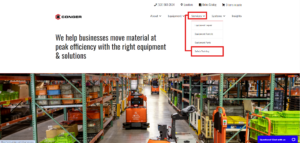
Tech colleges
It can be tricky to determine whether or not your nearest tech school offers lift truck certification programs. The reason is that tech schools offer many different academic programs. So it can feel like finding a needle in a haystack.
Here is what we recommend:
First, google “tech schools + your city” or “tech schools near me.”

Second, copy one of the resulting website’s URLs.

Third, in the Google search bar, type the following (but without the quotes): “site:url forklift.”
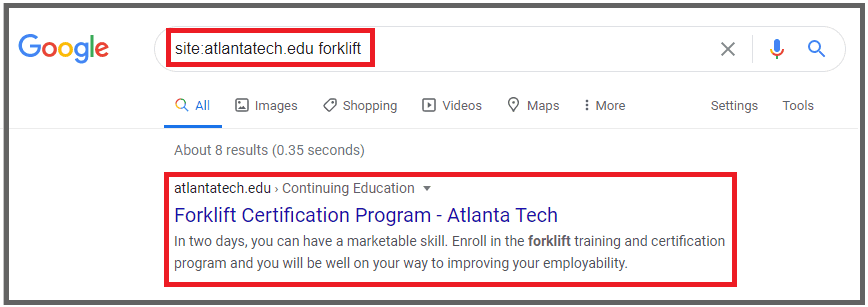
This search will return every mention of the word “forklift” that occurs on the website.
If nothing comes up, they probably do not have a training program.
Of course, you can always call and ask to be sure.
Staffing agencies
Some staffing agencies offer forklift training as part of a job placement program with companies that frequently hire operators.
However, it is not very common. It is more a matter of luck that an agency close to you will offer a program like it.
Still, you can check and see what’s out there. Try googling “staffing agency + your location + forklift training” and see what comes up.
Some staffing agencies offer forklift training for applicants. You will have to do a little “googling” to find them.[/caption]
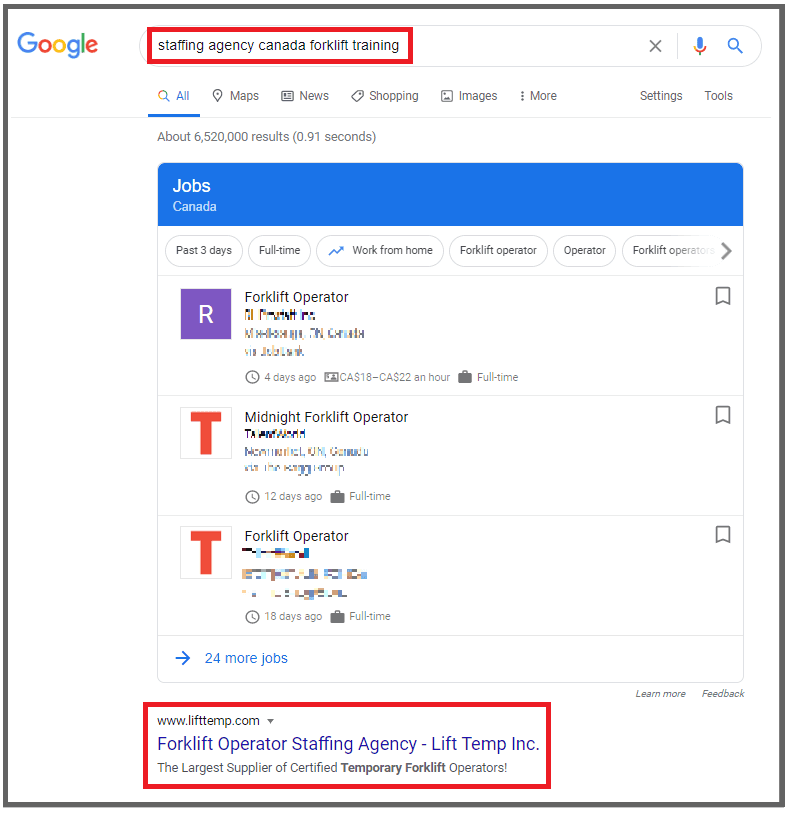
Employers
Some employers will hire and train forklift operators without any prior experience operating powered industrial trucks.
Companies that do this are typically larger and rely extensively on forklifts in their operations that can afford an internal forklift safety program with safety officers who are authorized to train and certify operators.
Unfortunately, there is no shortcut to finding these companies. It is simply a matter of searching around for who is hiring. Those that do provide in-house training will usually say so in their hiring pages or job descriptions. In Chapter 6 below, we will cover a few methods for finding these companies.
Now that you know where you can get certified, let’s cover some questions you might still have.
Questions about forklift operator training programs
How long does it take to get a forklift certification?
If taking an online course, the “classroom” instruction portion can usually be completed in 1-3 hours.
If going the in-person route, most classes run 1-2 days. That includes 4 to 8 hours of formal instruction, followed by the hands-on training and evaluation component. The hands-on portion can take as little as 15 to 20 minutes.
How much does a forklift license cost?
Online training (just the classroom portion) can run anywhere from $40 to $60. Courses that offer online or in-person classroom instruction plus hands-on training can cost anywhere from $200 to $280.
How long is the training good for?
OSHA’s standard 1910.178(l)(4)(iii) requires that forklift operators be re-evaluated once every three years.
However, you must also be re-evaluated within that time if any of the following events occur:
- You are involved in an accident or near-miss incident.
- You operate the lift unsafely.
- There is a deficiency in your evaluation.
- You are assigned a different type of forklift to operate.
- Your employer makes changes to the workplace that could affect the safe operation of your truck.
Now that you are up to speed on getting your forklift driver’s license, it is time to move on to what you can expect to learn during an actual training course.
Chapter 4: Forklift Training Topics: A Sneak Peak at What You’ll Learn in Class
You already know from the first chapter of this post that OSHA requires some 22 different topics covered during the formal instruction portion of the training.
But what exactly will you be learning when you sign up for a training course?
Let’s go through 8 different topics that you are likely to encounter. That way, you will know what you are in for.

1.Employer & employee responsibilities
To maintain forklift safety in the workplace, operators and employers have responsibilities.
In this section, you will learn about:
- The three levels of workplace responsibility.
- Your employer’s legal obligations.
- Your rights and obligations as an employee.
![]()
2.Working safely around pedestrians
Forklift certification is ultimately about being safe. Not only for you, the operator, but those around you.
To maintain safety, you will cover:
- Best practices for interacting with pedestrians.
- Who is at fault in pedestrian-involved accidents?
- How to secure a parked forklift to keep pedestrians safe.
![]()
3. Conducting pre-trip inspections
OSHA’s standard 1910.178(q)(7) states that forklifts must be inspected before being put into service.
That includes visually inspecting the truck for leaks and damage and an operational check while the lift is running.
You will what exactly goes into pre-trip inspections, including:
- The steps for visual and operational checks.
- How to use a maintenance logbook.
- What types of issues will prohibit you from operating your lift truck?
- How to document and remedy any issue you find.
![]()
4. Fuel sources
Depending on where you work, you may drive lifts powered by electricity, liquefied propane gas (LPG), compressed natural gas (CNG), gasoline, and/or diesel fuel. That said, electric and LPG-powered lifts are the most common ones you will encounter.
To ensure you can safely handle each fuel source, the course instructions will cover:
- The differences between electric and internal combustion (IC) forklifts.
- How to charge and maintain a forklift battery.
- How to inspect a propane tank’s condition.
- How to change a propane tank.
![]()
5. Capacity
Forklifts are meant to lift things and put them down. That much is obvious. Less obvious is how to tell the amount of weight your truck can safely lift.
There are several calculations that you must perform to determine the capacity of your fork truck. Do not worry – it is pretty simple math.
Capacity topics should include:
- How to tell how much weight a forklift can lift.
- How to determine how high you can lift a load.
- Definitions like “load center” and “center of gravity.”
- What a “data plate” is and how to read one.

6. Stability
Once you understand how to calculate capacity, you will learn what affects a forklift’s stability.
Although lift trucks have certain features designed to maximize their stability, they can still become unbalanced and tip over if precautions are ignored.
To avoid accidents and injuries from forklift instability, you’ll learn:
- The most common causes of tip-overs and how to avoid them.
- The “stability triangle” and what it means for maintaining stability.
- About momentum and how it affects truck stability.

7. Material handling basics
As a forklift operator, you may move different materials around, depending on where you work. Not every load is created equal.
Nevertheless, there are some universal do’s and don’ts when it comes to constructing loads, picking them up, transporting them, and placing them at their final destination.
To do so safely, you’ll learn:
- How to pick up a load, secure it, and place it in storage.
- Basic driving safety.
- When to use a spotter.
- How to enter and exit a semi-truck trailer.

8. Lift truck classifications
Since there are many different types of forklifts, you should be familiar with the most common ones you will encounter.
That’s why you will cover the seven different classes of forklifts. You can learn more about that right now by checking our post: 105 Types of Forklifts: The Complete List. In it, we show examples of trucks that fall under the different classes.

To give you an in-depth a breakdown, here is an outline of what operators learn during our Forklift Operator Certification Course.
Now that we covered what you will learn, let’s discuss how you can ace the final exam when it comes time.
Chapter 5: How to Pass Your Forklift Certification Test With Flying Colors
Before the hands-on training section, you’ll have to pass a written test on the classroom learning portion.
That’s the same whether you go the online or in-person route.
And just like with any test, there are some best practices you should observe to maximize your chances of passing:
- Prepare by testing yourself. It’s one of the best ways to learn and retain new information.
- Get plenty of sleep the night before (that means no “partying”!)
- Look over the test first – this will give you a sense of the questions.
- Read the instructions and each question carefully. It’s easy to get a question wrong simply because you missed a key detail in the instructions.
- If you don’t remember the answer to a question, skip it and come back to it later.
- Don’t rush! Take your time and be as thorough as possible.
For more best practices to ensure you ace your test, check out Harvard University’s excellent resource on test-taking tips.
Build your confidence with our forklift certification practice test
Practice makes perfect, right?
To help you learn the material and prepare for the final exam, we’ve put together a free 25-question forklift certification practice test.
We have already addressed some of the questions in this post, but you may still find them unfamiliar. That’s perfectly fine. This exercise will help you understand the range and difficulty of questions you can expect.
And regardless, you’ll be able to see the correct answers immediately after you hit “Submit.” There’s no downloading required. Plus, you can take the test as many times as you need until you get a perfect score!
Now that we’ve covered everything you need to know about getting trained and certified, let’s examine what you need to do to land a forklift operator job.
Part II: Landing a Job
Chapter 6: Should I Become a Forklift Operator? How to Decide If the ‘Operator’s Life’ Is Right for You
You may have already done the research and decided that you want to be a forklift driver. If that’s the case, feel free to skip this section.
If you haven’t, you might be wondering:
- What it’s like to drive forklifts for a living
- How much money you’ll make
- Where you can find work
- And so on…
So, let’s paint a picture of “the operator’s life” so you can decide if it’s what you want to do.
What it’s like being a forklift operator
The job duties
According to Indeed.com, forklift operators perform the following job duties:
- Prepare products for shipment
- Inspect products for damaged or missing components
- Place products and materials in appropriate storage locations
- Track inventory
- Communicate with shipping/receiving, truck drivers, co-workers, managers, vendors, and others in the supply chain
- Perform light forklift maintenance
To see some of these duties in action, check out this time-lapse video showing “a day in the life” of an actual, working forklift operator:
As you can see from the video, most of an operator’s job duties involve a high degree of independence.
This is especially true considering, that many companies use scanners paired with warehouse management systems (WMS) to tell you what to do with the material you’re handling.
So, you won’t have to repeatedly ask your supervisor where to go or what to do next. Instead, rely on a computer to direct you throughout your shift.
If that kind of freedom appeals to you, a forklift operator job might be a great fit.
The environment
While the job duties above are pretty typical for forklift operators everywhere, the actual working conditions can vary greatly.
Depending on where you get a job, you may work indoors, outdoors, or even a combination. Warehouses, for instance, will mostly involve indoor work. But lumber yards will be mostly outdoors, with some indoor work sprinkled in throughout your shift.
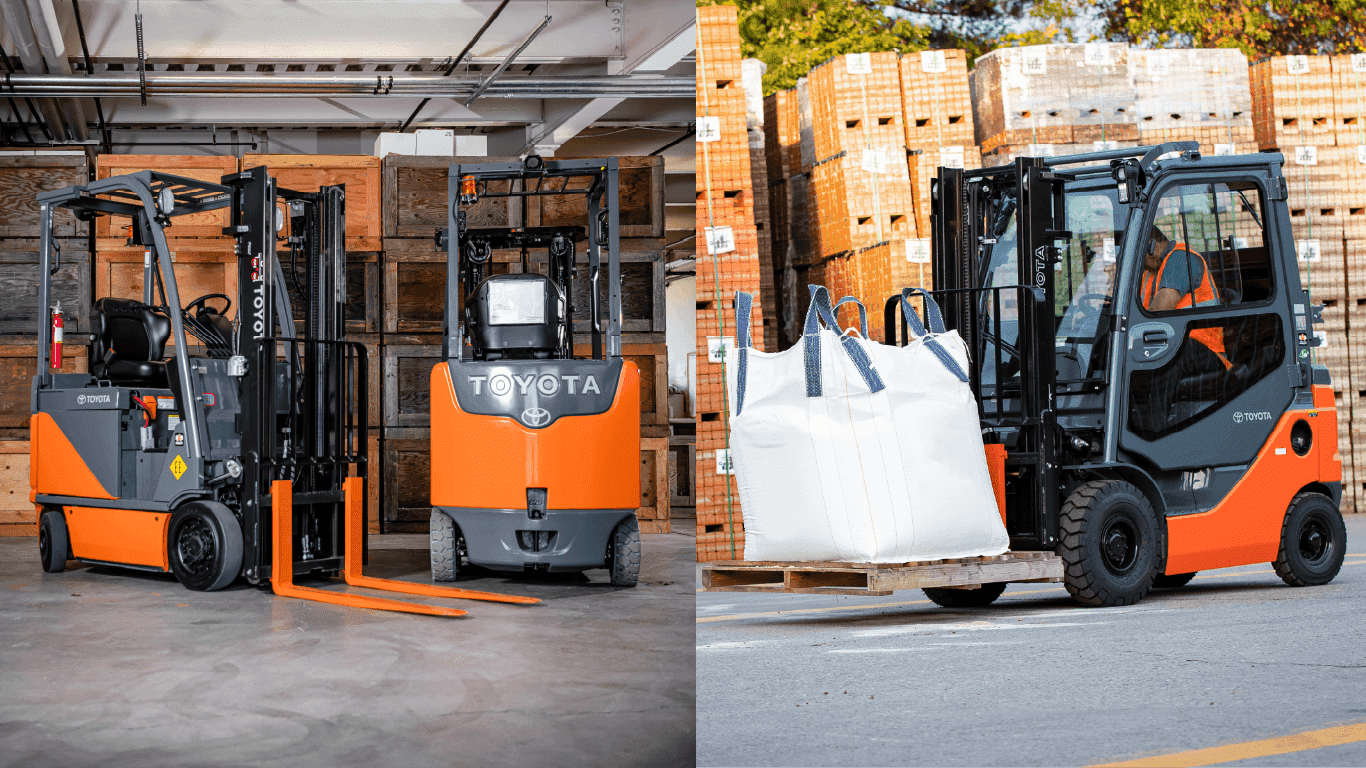
You may also be exposed to environmental hazards, like extreme heat (foundries), cold (cold storage and food processing plants), or even fumes and corrosive substances (chemical plants).
The physical aspect
If you want to drive lift trucks for a living, you will likely have to cope with at least some level of physicality on the job.
Sometimes you will have to move products by hand that are too small to be manipulated by your truck. Other times, you may have to climb ladders, manually move pallets, or stretch-wrap materials for shipping.
Most of the time, however, you will be seated in the driver’s seat. Some operators report that they don’t even leave their seats all day!
Don’t think that since you’re sitting down driving you’re free from physical exertion.
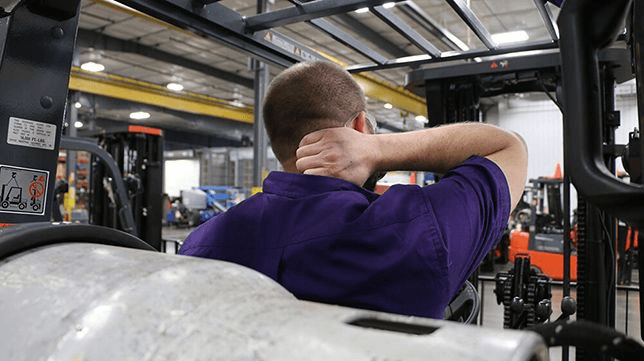
Driving a forklift means making lots of turns and driving in reverse. So drivers repeatedly twist and contort their bodies to see where they are going, especially their necks and heads.
Those movements, combined with vibrations and other aspects of forklift operation, can cause some health problems.
The risks
Driving a forklift may be repetitive, but it’s anything but mindless work. It requires being alert at all times.
That’s because you’re driving a machine that can weigh over 10,000 lbs. And one careless move can result in tragedy very quickly.
So you must be always aware of your surroundings. That’s the only way to avoid injuring yourself and pedestrians, or damaging property, equipment, and product.
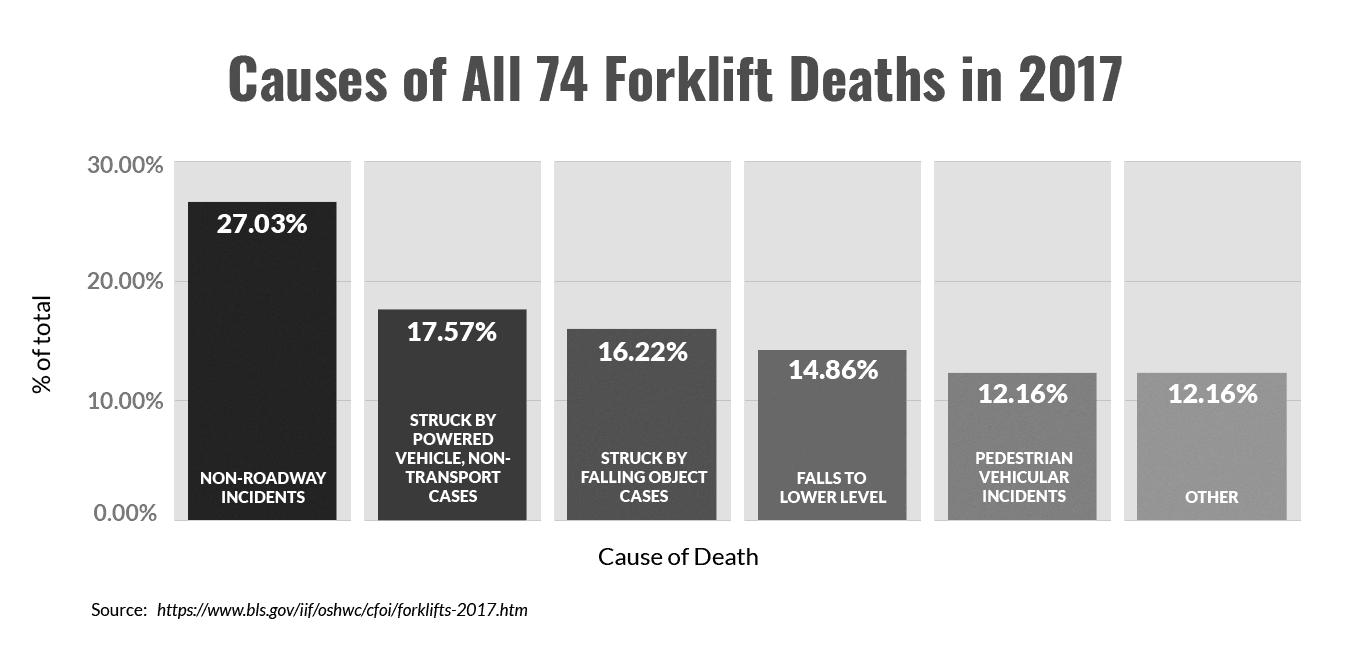
Speaking of injury, you should be aware of all the risks to your health. You can be crushed, fall off the lift, be hit by another driver, or suffer carbon monoxide poisoning, among other health risks for lift truck operators.
Forklift driver salary: How much you can expect to get paid
Starting a career as a forklift operator can be a great way to bump up your wage. This is especially true if you’re transitioning from traditionally lower-paying jobs, like fast food and retail.
In recent years, companies have realized that there are not as many lift truck operators as they need to meet demand. The result is that they’ve had to pay more to hire and retain drivers.
So then, what is the average forklift driver’s salary?
According to the most recent estimates from the U.S. Bureau of Labor, the average (national) wage of a fork truck operator is $21.98 per hour. That comes out to $45,720 per year.
Forklift operators in the U.S. make $45,720 per year, or $21.98 per hour, on average.
However, numbers alone don’t tell the whole story. Besides wages, health care coverage, retirement plans, sick leave, and vacation should also play a role in your decision.
Fortunately, most forklift operators have those benefits available to them.
You can see a much more detailed analysis of forklift operator compensation and benefits, based on what real operators report, by visiting Indeed.com’s page.

Chapter 7: How to Get a Job as a Forklift Driver
So you know what the job of an operator is really like. Now how do you get the job?
Let’s go through the steps.
Job Requirements
Most employers have the same basic requirements for forklift operators. These are:
- Ability to follow instructions
- Basic math skills (for tracking inventory)
- Good communication skills (verbal and written)
- Ability to lift 50 lbs. or more
Additionally, some employers require that you have a high school diploma or GED. If you fall into the latter category, check out GED.com. There, you’ll find everything you need to get your high school equivalency diploma and move forward with your new career.
Now, some jobs will have certain additional requirements unique to them.
For example, if you’re working with certain specialized forklifts, like order pickers, you can’t be afraid of heights. That’s because some order pickers can be raised to 30′ or more in the air!
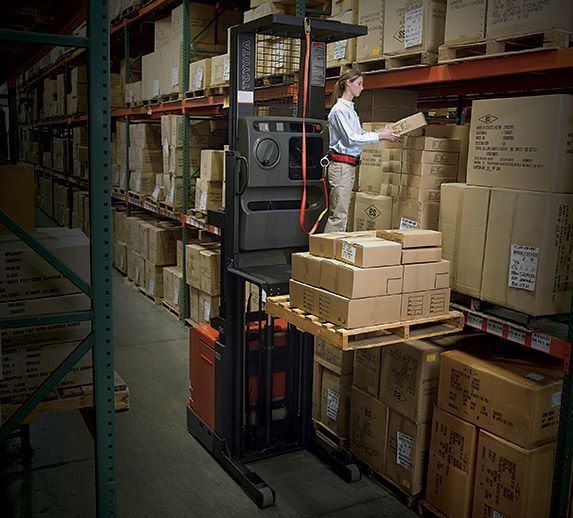
Another case could be “hybrid” jobs, where you will drive forklifts while completing other duties. For instance, some warehousing jobs require you to pick and pack orders for shipping, stock shelves, manage inventory, etc. So the employer might require more advanced computer skills than they would for a strict forklift driving job.
That about covers the basics. But before we move on to the actual “how to” instructions for getting a job, let’s answer a couple of questions you might still have about job requirements.
Questions about forklift operator job requirements
Do you need to be certified before applying for a forklift job?
Let’s answer this question first according to a strict interpretation of the word “certified.” As you know, you can only be certified once you’ve been evaluated operating in the workplace. So, the answer to this question is “no.”
Another way to look at the question is whether or not your prospective employer will want you to have forklift training before they hire you. In other words, will they want you to have gone through the kinds of online or in-person training courses we’ve covered in this post?
And the answer to that is it’s not always required – but it certainly won’t hurt.
Make yourself stand out!
It’s not a bad idea to get your forklift training done ahead of time. It’ll separate you from other applicants who haven’t shown the same initiative as you have.
That’s because completing the training up front shows that you’ve taken initiative. It shows that you care. It shows that you’re serious about getting the job. It will separate you from the majority of applicants who have not.
All those attributes can help tip the scale in your favor.
Can you get a job as a forklift operator without experience?
It depends on the employer. Unsatisfying, we know.
Commonly, companies will want at least some general warehousing experience. But others will hire and train candidates without any experience whatsoever.
If it’s a company that you want to work for, you may want to try to get hired on the warehouse floor and work your way up to the forklift operator.
Another option is to apply for a “hybrid” job, as we discussed. These tend to be more flexible with their driving experience requirements than jobs where you’ll only drive a forklift. Then, once you’ve acquired that initial experience, you can move on to a strict driving job.
Finding opportunities and applying
Now that you understand the job requirements, the next steps are the same as they are for any other kind of job.
That is, you’ve got to get a resume together, find a hiring place, apply, and interview.
Don’t have a resume yet? Read ResumeGenius’ outstanding resource on how to create a resume. It has everything you need to create a resume that’ll get you hired – even down to what size font to use!
Some types of companies that hire forklift drivers are:
- Warehouses
- Distribution centers
- Retailers
- Manufacturers
- Lumber yards
- Steel mills and metal recyclers
- Foundries
- Construction
- Logistics companies
- Shipyards and ports
- Food processing plants
Not sure where to find these kinds of companies?
Well, an easy way to find them is by checking online. There are many different job sites, like Indeed, SnagAJob, and ZipRecruiter. Use their search feature and type in “forklift operator” or “forklift driver” and see what comes up.
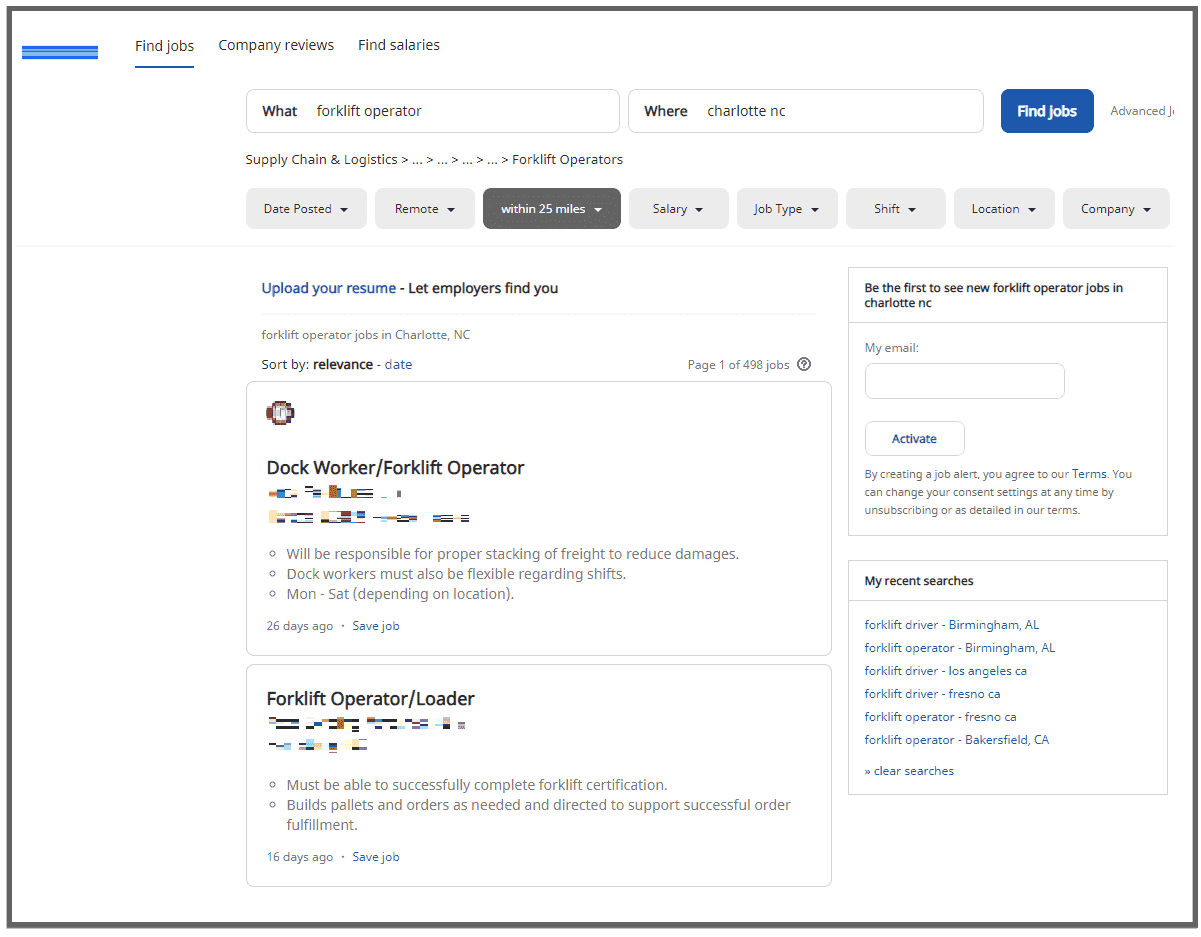
While you’re online, you can also look for staffing agencies. These companies will do the job search on your behalf, which takes a lot of the pressure off of you. Many will even help you put together a resume or check your existing one over for improvements.
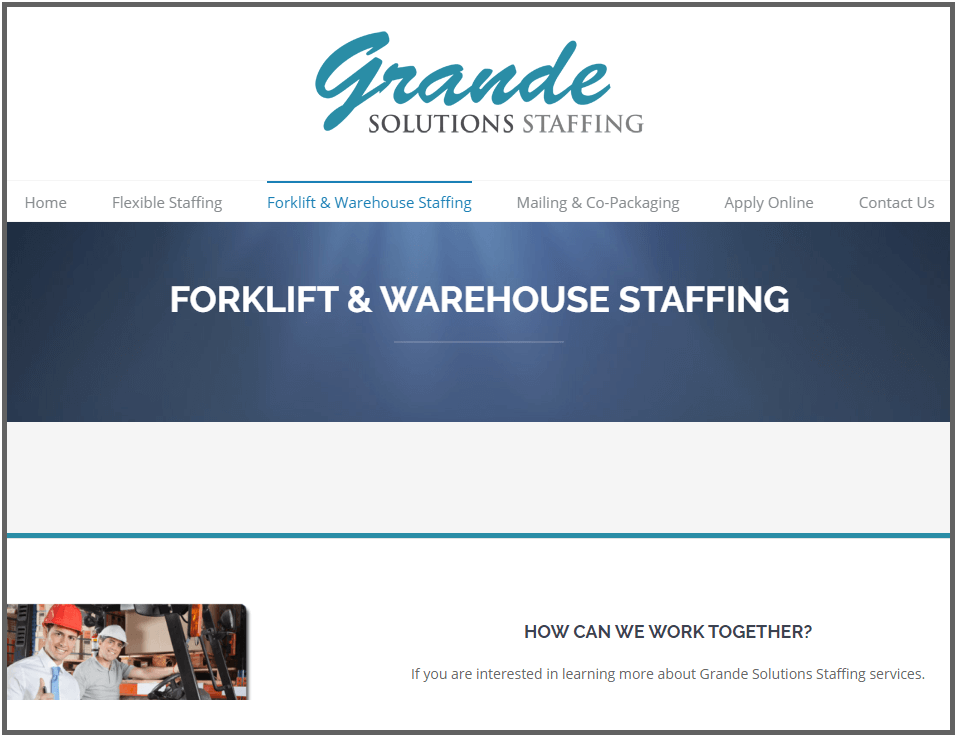
You can also ask around. Do you have friends or family who work at companies that use forklifts? See if they’d be willing to put you in touch with the hiring department – and maybe even give you a recommendation!
Once you’ve got your choice of companies narrowed down, it’s time to hit the “Send” or “Submit” button and apply for the job!
After that, it’s just a matter of acing the interview. And here’s an excellent resource on interview tips to help you land the job.
Good luck!
Wrapping It Up
There you have it: the complete guide to getting your forklift license.
We hope this guide has provided you with the essential information to navigate the certification process, understand what you need to study, and ultimately secure your first forklift driving job. Now, you are well-equipped to take the next steps toward earning your forklift license and embark on a successful career in forklift operation.
